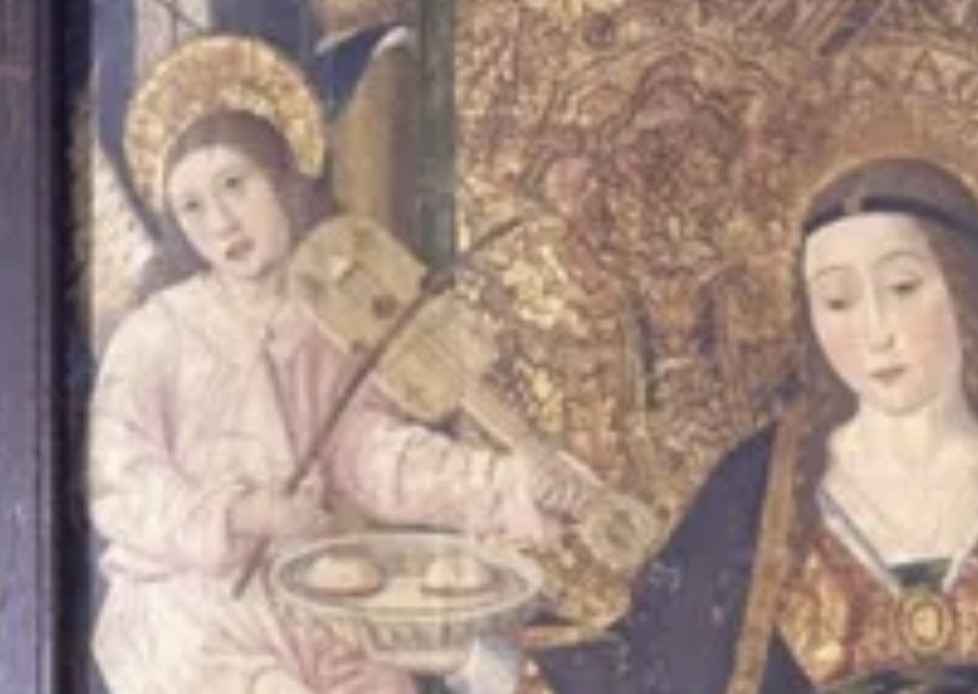Angel playing vihuela, in painting of “Santa Agueda” 15th century Hispano-Flemish style.
(1450/ca) - Barcelona, Museu Nacional d’Art de Catalunya
instrument: vihuela de arco | century: 15cent/2/mid | catalogue nº: 15-227

Artwork
Creator anon
Medium Artwork: Painting
Location
City Barcelona | Region Catalonia | Old kingdom Aragon
Characteristics
| Body Corners | Strings 3 strings | Neck Long | Pegbox Flat circular |
| Bridge Tailpiece | Frets Yes | Back | Pegs Lateral |
| Technique Bowed a braccio |
Commentary
ARTWORK
The provenance of the painting is the Capilla de Santa Ágata, a chapel in the Plaza del Rey, Barcelona, now in the collection of the Museu d’Art de Catalunya in Barcelona, catalogue number 004513-000. It is Currently on long-term loan in ICUB Museu d'Història de la Ciutat. It was acquired from the Panidura collection in 1932. Some references to this painting confuse its authorship between the Maestro de Osma and the Maestro de Burgo de Osma, more than half a century earlier. Jordi Ballester (personal correspondence) suggests that is from the mid-15th century based on the gilding and embroidery of the saint’s gown and the cloth covering the backrest of the throne, or the the black and white floor times. Ballester proposes that it is not Catalan-Aragonese, but probably Castilian.
INSTRUMENT
Vihuela de arco with cornered waists. Circular soundhole in the centre of the soundboard. Diamond shaped “taracea” decorations on the corners of the soundboard. Curved bridge. 3 strings attached to tailpiece. Long neck with 7 frets. Circular pegbox, partially hollow with six lateral pegs. Played by an angel.
IMAGE
https://es.slideshare.net/mafreijomil/4-reyes-conjunto-gtico-y-crecimiento-hasta-siglo-xiii2
Photo: — slide 11 (accessed 20/04/2018)
https://es.slideshare.net/mafreijomil/4-reyes-conjunto-gtico-y-crecimiento-hasta-siglo-xiii2